How to Take a Gap Year with $5,000
Taking a gap year without a bottomless budget is possible with a little planning. Read on to learn how to spend a year abroad with $5,000 and just how far your money will go in different parts of the world.
Taking a year off from university or the world of work to travel the globe on a gap year sounds just about perfect, doesn’t it? Whether you picture yourself trekking through the mountains of Nepal, volunteering at an orphanage in the Dominican Republic or learning French as you explore the museums of Paris, there’s not much that doesn’t make taking a gap year an attractive option. Except, of course, finances.
Budget can be one of the main hindrances for those interested in taking a gap year. For starters, it can be difficult to know how much a gap year will actually cost -- which is important. Figuring out the cost is the first step in knowing if you will be able to afford such an experience.
From housing to visa fees to airline fares, there’s a lot of individual items that make up the cost of a gap year in its entirety. Gap year costs can also be affected by the location, activities, and duration, as well as by your decision to do a gap year independently or through a provider.
To save you a headache and stress, we crunched the numbers for you. We used a theoretical budget of $5,000 and calculated how many days you'd be able to spend on a gap year in Africa, Asia, Australia, Europe, and South America.
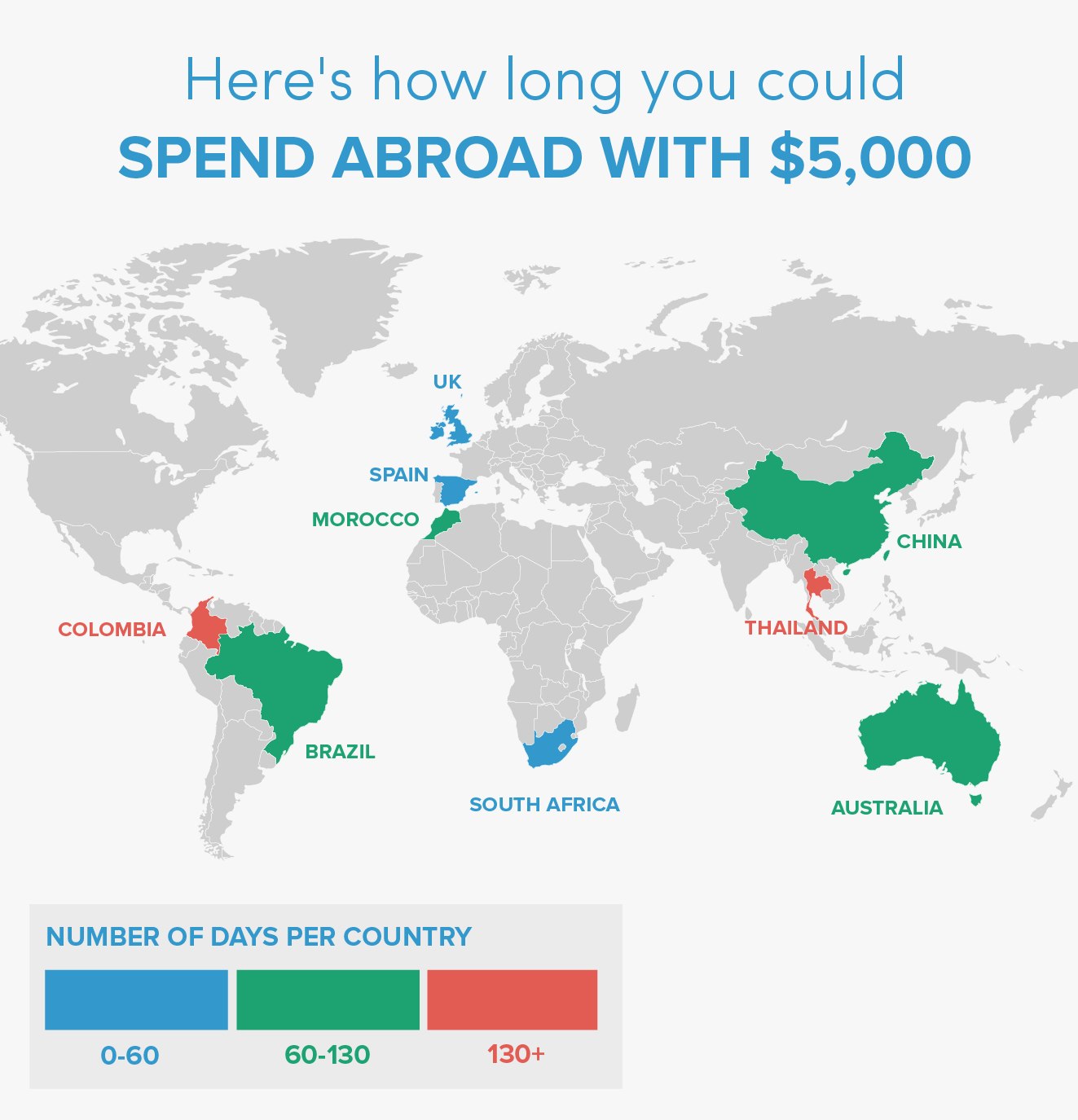
Please note, day to day expenses include dorm bed accommodation, low-cost meals, and basic transportation and activities in the location. Also, airfare costs will be higher for you if you are not flying out of the gateway airports selected below. Be sure to factor additional flight costs from your home airport into the pricing.
Alright, then, to the good stuff: how many days would you be able to spend on a gap year abroad with a budget of $5,000?
Budgeting for Your Independent Gap Year
On an independent gap year you’ll be charting the waters of your time abroad solo. This means you’ll have to put in extra effort to make your own travel arrangements, find your own activities and manage your own experience abroad. In addition to allowing for greater independence, this option can also be the way to go if you are on a tighter budget.
How Long a $5,000 Gap Year Budget Will Last in Asia
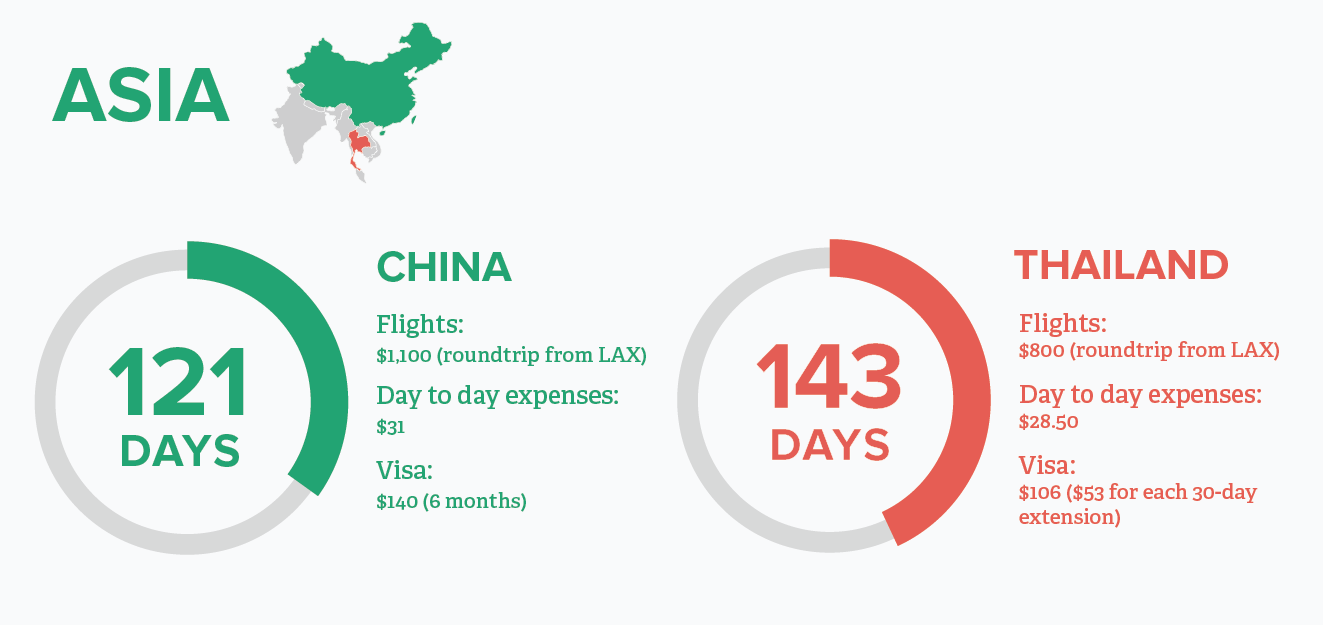
Asia is one of the most popular gap year destinations, largely in part because of its affordability. If you really just want to spend your gap year traveling, volunteering, and exploring a new country, Asia will allow you to spend 3 - 5 months there on a $5,000 budget.
Of course, if you want to spend more time than that in Asia, there are also a lot of opportunities for teaching English. As an ESL teacher in Asia, you could easily stretch your initial $5,000 budget to a year (or more) by supplementing it with an income. If this option interests you, learn more about how much you can make as a teacher.
Also note that countries like Cambodia and Laos tend to be even more affordable than Thailand, and gappers commonly travel there after their visa in Thailand has expired.
How Long a $5,000 Gap Year Budget Will Last in Australia
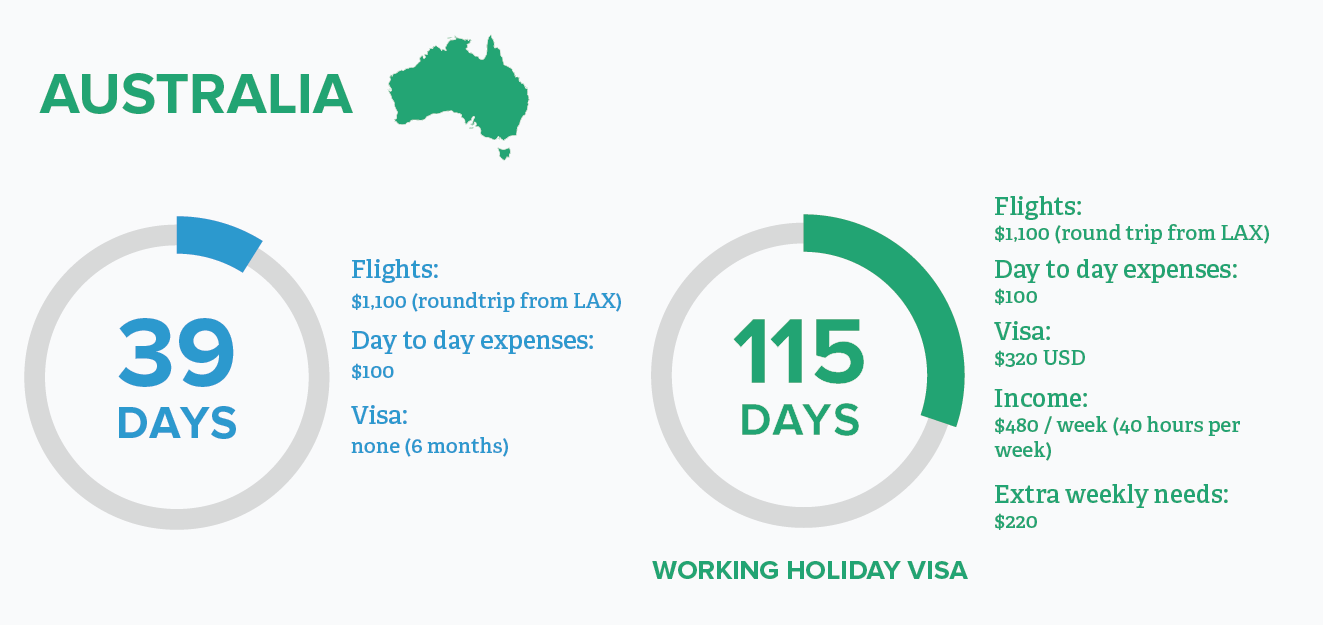
Though a popular destination for gappers, Australia is by no means the most affordable on this list. Fortunately, though, they have a working holiday scheme which allows gappers to work while on a gap year in Australia.
Even if you were to only make minimum wage, you'd be able to almost triple the amount of time spent in Australia by going on a working holiday visa, rather than simply traveling there.
You could also drop your daily expenses by working in exchange for a free stay at a hostel, or subletting a room in an apartment via Gumtree.
How Long a $5,000 Gap Year Budget Will Last in Europe
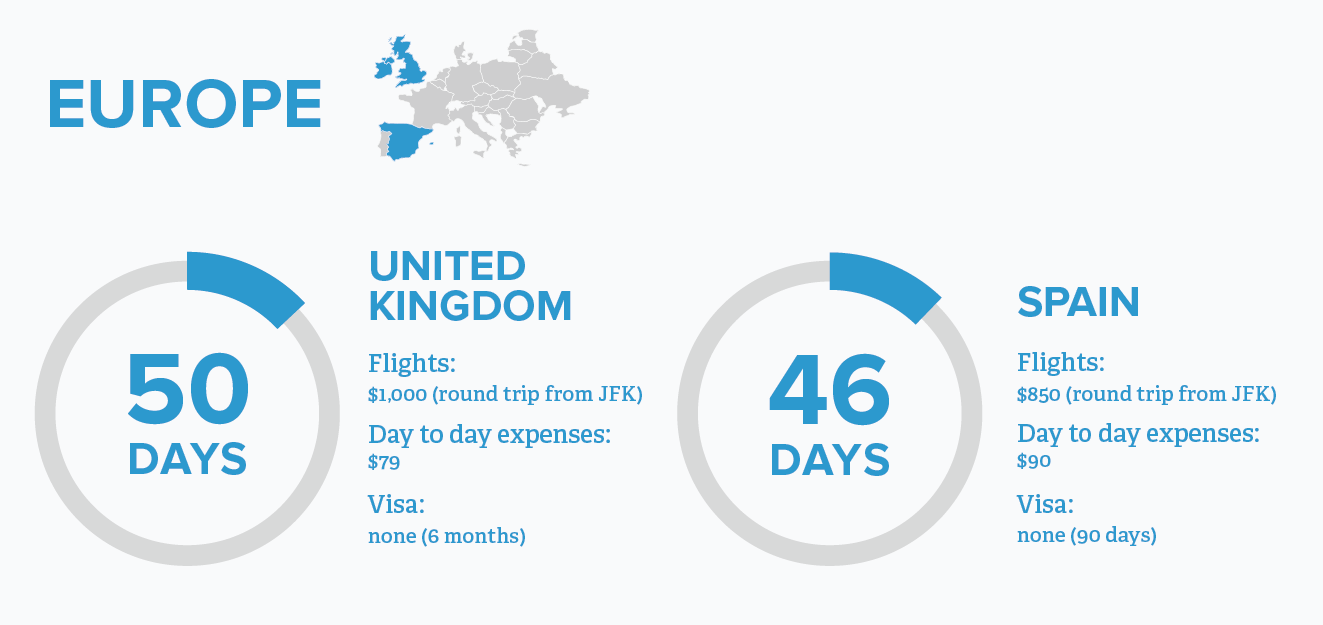
Europe is a classic destination for post-graduation travel, learning a new language, or immersing yourself in one of the great cuisines of the world. Although you could certainly cut back on expenses by WWOOFing (working on an organic farm) or heading to some of Europe's less expensive destinations (Portugal, Spain, Germany, Czech Republic, and Greece, for example), your money won't go as far here as it would in Asia or South America.
Another tip for cutting down your daily expenses would be to couchsurf or sublet an apartment. For example, if you sublet a furnished apartment via UniPlaces in Madrid, you could spend as little as $340 per month on rent. By cooking most of your meals and staying put, you could bring that $90 / day down to $30 -- which would allow you to stay in Spain for the full 90 days you're granted on a tourist visa -- with about $1,400 leftover.
Our suggestion? Head to Morocco or Turkey, where you could easily stretch the remainder of your money for another month or two.
How Long a $5,000 Gap Year Budget Will Last in South America
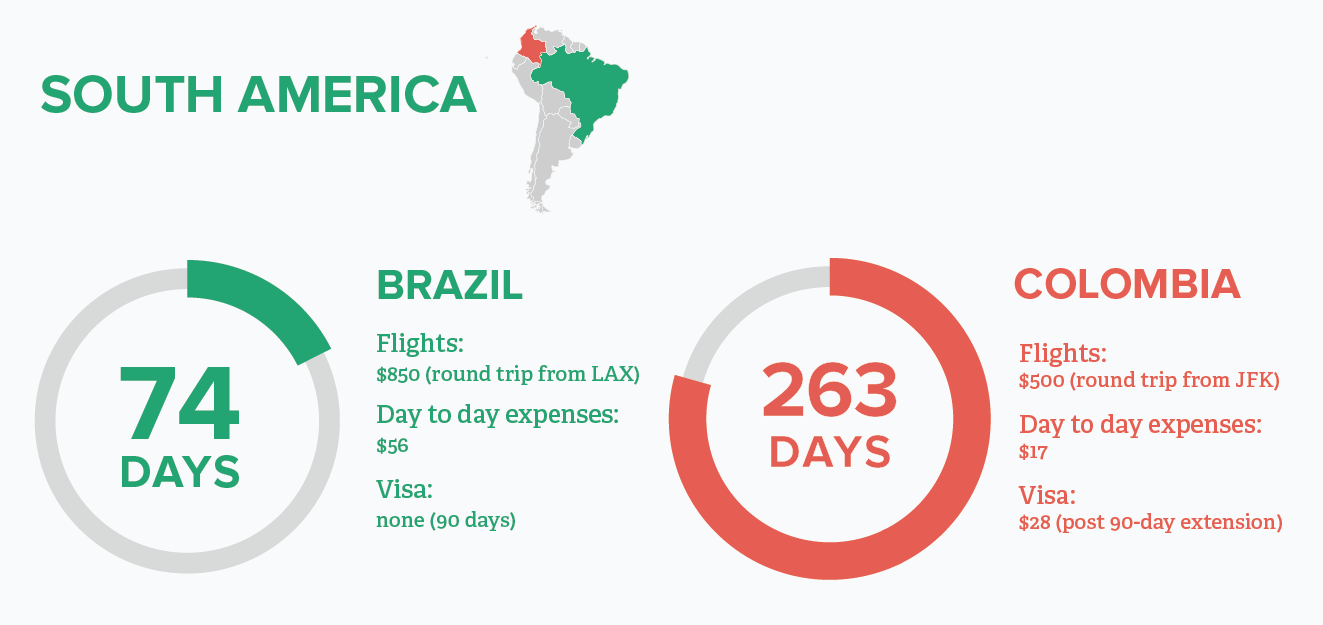
South and Central America are generally affordable and popular destinations for gappers coming from North America. Flights tend to be pretty cheap -- with most Central American locations accessible at less than $500 RT -- overland transportation is even cheaper ($2 distance buses in Peru, anyone?), and cost of living is generally low.
Brazil will be more expensive than other Latin American destinations, but otherwise, you could easily find ways to stick around for 6 months or more on a budget of $5,000.
Again, WWOOFing, getting a teaching job, and/or staying in one place for a longer period of time will help you cut back on expenses and extend your trip. You can also find some reasonably priced Spanish language courses that include housing and food (if you're placed with a host family).
For example, with Tico Lingo, you could spend about $60 / day on housing, language courses, food, and incidentals and manage to stay in Costa Rica for about 75 days.
How Long a $5,000 Gap Year Budget Will Last in Africa
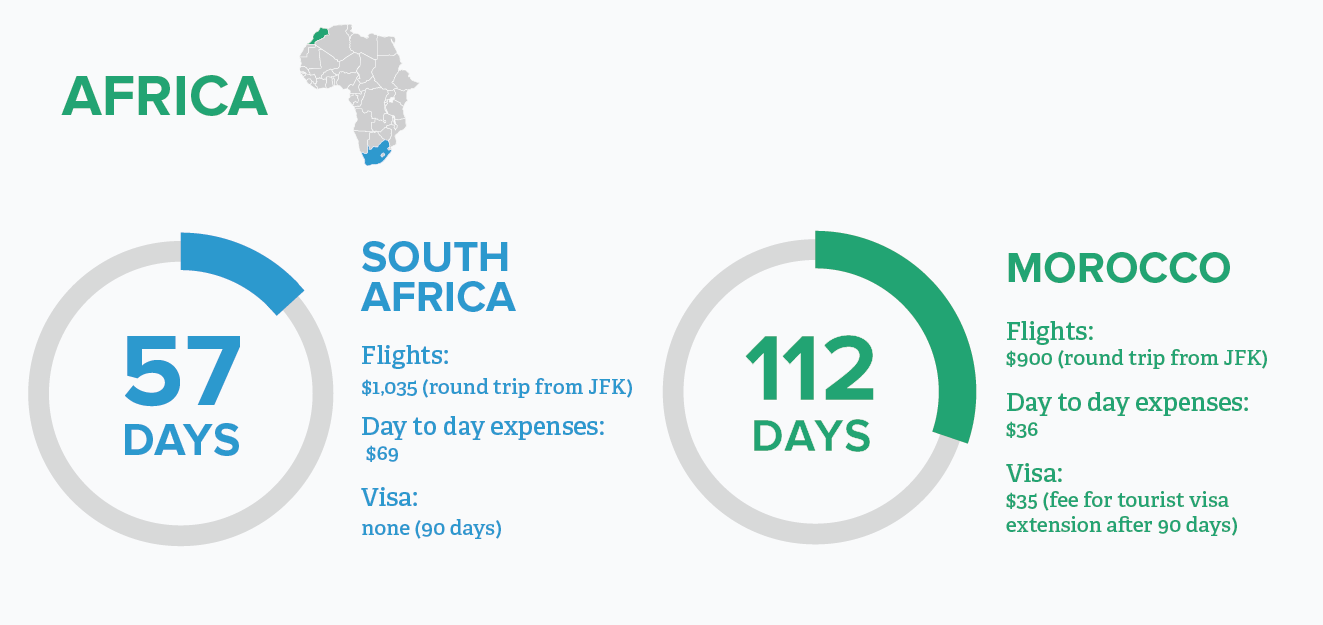
Unsurprisingly, most African destinations are pretty affordable -- though you might not always find the best flight deals here. Especially if you're traveling to Africa to volunteer in a more rural area, your day to day expenses will be very low.
Activities and tours (e.g. going on safari or white-water rafting down the Zambezi), however, might eat into your budget. Definitely, make room for a few excursions -- after all, how often do you get to ride camels into the Sahara? -- but budget for them in advance.
Also noteworthy: South Africa is typically on the more expensive end as far as African destinations go. Head out to a lesser traveled spot, like Tanzania or Ghana, and you'll enter more budget-friendly territory.
Budgeting for Your Gap Year With a Program Provider
Program providers take much of the stress out of gap year planning by organizing the logistics of experiences overseas for you. Going on a structured program helps many students make the most out of their time abroad, and may open new avenues students wouldn’t have thought to explore on their own. As you’ll notice from the numbers below, however, this added assistance can come at a price.
On the bright side, program fees typically cover the bulk of your expenses, like housing, food, in-country transportation, and even travel insurance. Be sure to take a close look at what's included before writing off a program as too expensive -- sometimes it might actually be on par with an independently organized gap year!
Here are some examples of gap year programs that price out for roughly the same as an independent gap year of the same length:
- Asia: Volunteering in Thailand with GVI
- Australia: Australia Adventure with Gapforce
- Europe: Europe Tour with Gapforce
- South America: Volunteer in Peru with Camp Peru
- Africa: Volunteer in Kenya with Volunteering Solutions
As you can see, the world is your oyster! While a $5,000 gap year budget might not sound like a lot, it can certainly cover enough time for you to see the world if you budget wisely.
